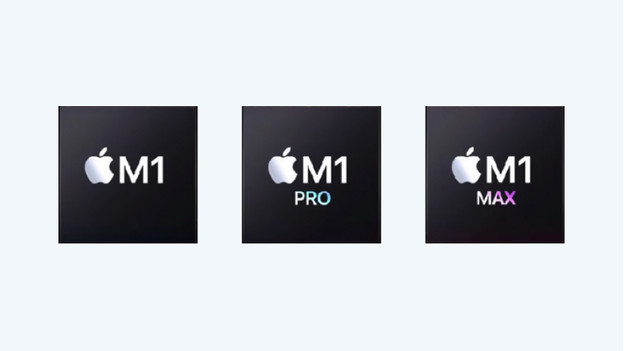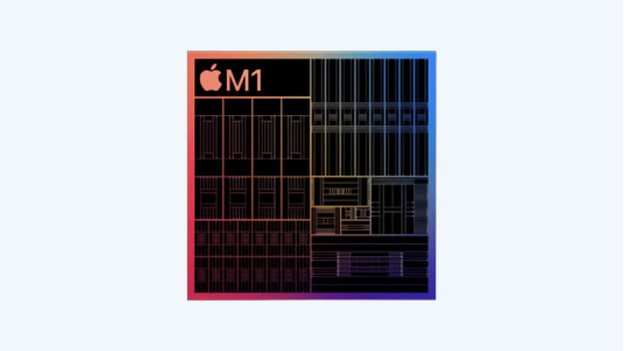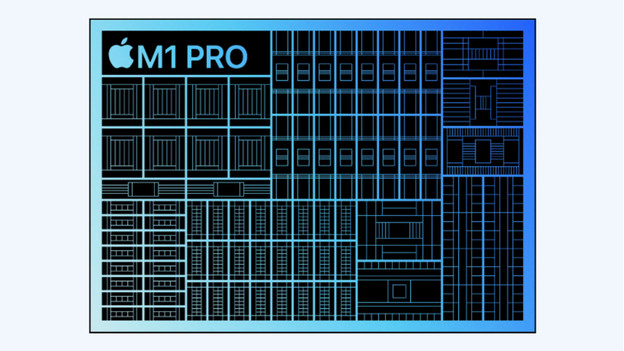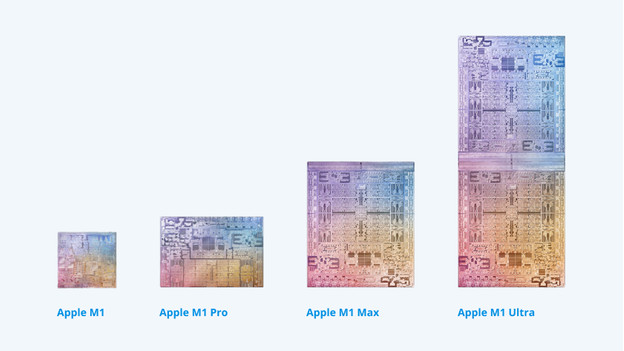
Which M1 chip do you need in your Mac?
Note: new chips available
There are new Apple Silicon chips available for the Apple MacBook.
Choose an M1 chip

Apple switched chips, from the manufacturer of Intel to its own Apple Silicon chips. Within the M1 series, there are 4 chips: the M1, M1 Pro, M1 Max, and M1 Ultra. We'll explain the following in this article:
- What's Apple Silicon?
- What do the specifications mean?
- Apple M1
- Apple M1 Pro
- Apple M1 Max
- Apple M1 Ultra
What's Apple Silicon?

Not long ago, every computer had a motherboard. Various parts were attached to these motherboards, such as the processor, the video card, and the RAM. These were physical, separate components. With an iMac with Apple Silicon, these separate components are all combined into 1 chip. The advantage of this is that the computer works much faster, because there's no distance between the different components. Now that Apple makes both the hardware and the software itself, they work together even more efficiently.
What do the specifications mean?
| Cores | There are performance-oriented and energy-efficient cores. Each core can perform its own task. The more cores, the more powerful the chip. |
|---|---|
| CPU | Compare this to the processor, which is basically the brain of the computer. The CPU performs all of the essential tasks, such as running the operating system and opening apps |
| GPU | This can be compared to the video card in your computer. The GPU takes care of the complicated graphic processes, such as creating 3D designs or some serious video editing. |
| Neural Engine | This component focuses on machine learning, such as voice recognition and photo analysis. |
| Central storage | It's not entirely accurate, but it's often referred to as RAM. The central storage is a shared storage for the CPU and GPU to retrieve information from. The more RAM, the faster the processes. |
| Memory bandwidth | This is the speed the CPU and GPU need to get information from the RAM. You can compare it to the maximum speed on the highway, The higher the number, the faster the process goes. |
Apple M1: standard tasks

In 2020, the 13-inch MacBook Air was the first product with an M1 chip. This chip is suitable for daily tasks like working with a text editor or spreadsheet, sending emails, and browsing the internet. You can work with 1 external 6K screen at most. We can now call the M1 chip the starter model. Thanks to the balance between energy-efficient and performance-oriented cores, the performances are of high quality. And you can still work for a long time on a single battery charge.
Apple M1 Pro: photo editing

The M1 Pro chip is suitable for daily tasks, but you can easily edit photos and videos as well. In 2021, Apple announced MacBook Pro models with this M1 Pro chip. This chip has more cores in the CPU and GPU, and the RAM was increased to up to 32GB. This allows you to easily work in multiple demanding programs at the same time, without the MacBook slowing down. The M1 Pro chip supports up to 2 external 6K screens.
Apple M1 Max: videos and 3D designs

With the Apple M1 Max, you can edit up to 30 4K video tracks at the same time and render extensive 3D designs. Whether you connect your MacBook to the power grid or not doesn't affect the performance. With the M1 Pro chip, you can work with 6K screens and one 4K screen at the same time. All of the specifications of this chip have been upgraded. It has 10 CPU cores, 24 or 32 GPU cores, up to 64GB RAM, and a 400GB/s memory bandwidth.
Apple M1 Ultra: true powerhouse

In 2022, Apple launched a new product. The Apple Mac Studio. This desktop also has a new chip, the Apple M1 Ultra. This chip is a combination of 2 M1 Max chips. The chips are connected to each other via interconnect. Apple calls it UltraFusion. It provides up to 20 CPU cores and 64 GPU cores. It has a 12GB RAM and the memory bandwidth goes up to 800GB/s. This makes the M1 Ultra an exceptionally strong chip. You can create a 3D city or edit 18 streams of 8K ProRes footage. And you can edit 422 video tracks at the same time on up to 5 external screens.


